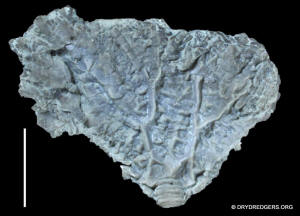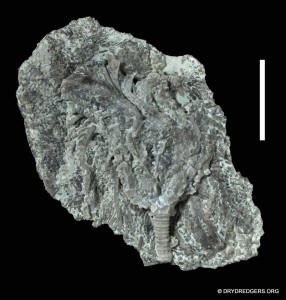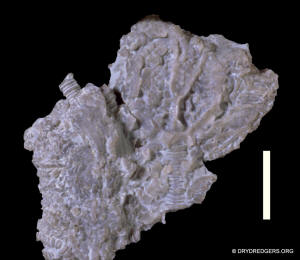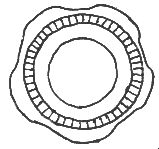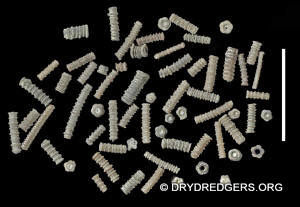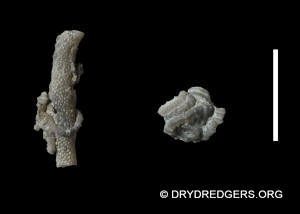A Beginners Guide To Identifying
Cincinnatian Crinoids
By Jack Kallmeyer
Camerata - Diplobathrida
Gaurocrinus nealli
Rhaphanocrinus sculptus
Crinoid Anatomical Glossary
Return to Crinoid main page
Gaurocrinus nealli
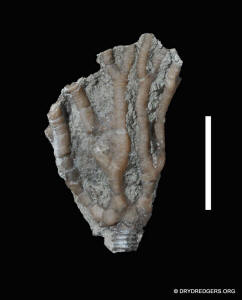 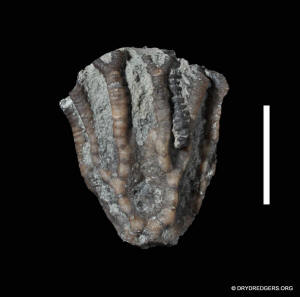 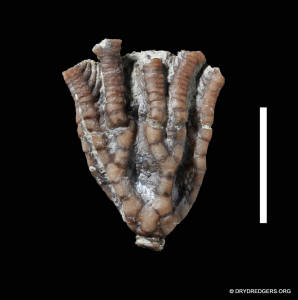
10 mm scale
Photos by Jack Kallmeyer |
The cup of G. nealli has very prominent
ray ridges that branch once on the
calyx and at least one more time
above it. The anal series is a raised ridge along the side of the
calyx. Gaurocrinus is a diplobathrid camerate
crinoid meaning that the cup is composed of three levels of plates. The
calyx plates between the raised ridges are small and irregularly shaped.
The arms are pinnulate. The
tegmen which covers the top of the
calyx is
comprised of many small plates with a small, narrow, dome-shaped
anal
sac.
The stems are pentagonal in shape and vary in diameter
depending upon position. See stem descriptions for details.
Gaurocrinus used a
distally coiled stem type of
holdfast.
Gaurocrinus can be found in the
upper Waynesville (Blanchester Member) and lower Liberty Formations.
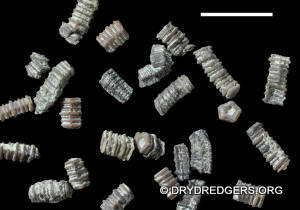
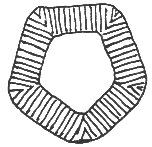 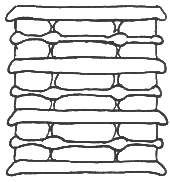
Gaurocrinus Stems
10 mm scale
Photo and Artwork by Jack Kallmeyer
Stem is pentagonal with very rounded
corners. On some columnals the corners project more than in this drawing
but remain rounded. The articulating ridges are always perpendicular to
the sides of the pentagon. The central opening is rounded pentagonal. |
Crinoid
Anatomical Glossary
The Dry Dredgers and individual contributors reserve the
rights to all information, images, and content presented here. Permission to
reproduce in any fashion, must be requested in writing to admin@drydredgers.org.
www.drydredgers.org is designed and maintained by Bill Heimbrock.






